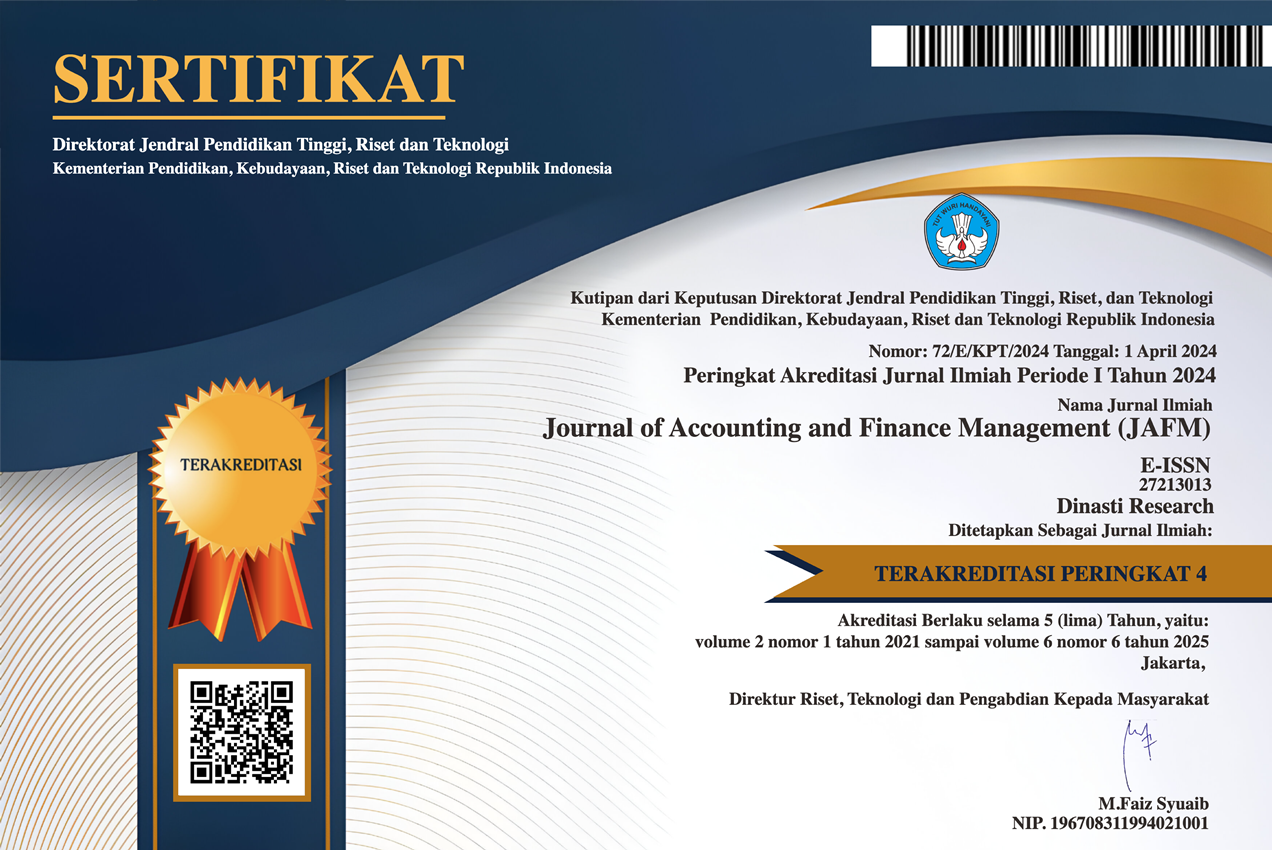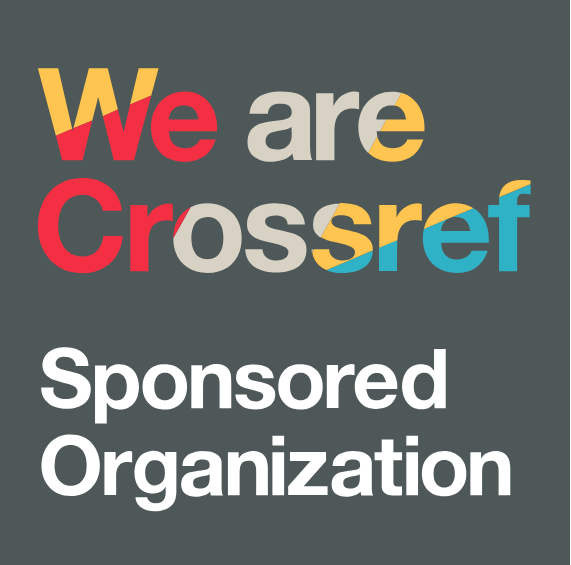Theory of Planned Behaviour Pada Niat Pembayaran Zakat, Infak, Sedekah (ZIS) Secara Online
DOI:
https://doi.org/10.38035/jafm.v5i6.1593Keywords:
Theory of Planned Behavior, Niat Pembayaran, ZIS, Fintech, Pembayaran DigitalAbstract
This study aims to analyze the factors influencing people's intention to make Zakat, Infak, and Sedekah (ZIS) payments online using the Theory of Planned Behavior (TPB) approach. This model examines the influence of attitude, subjective norms, perceived behavioral control, and trust on the intention to make digital ZIS payments. The study employs a quantitative method using a survey technique involving 105 student respondents in Surakarta. Data were analyzed using Structural Equation Modeling-Partial Least Square (SEM-PLS). The results show that attitude and subjective norms significantly influence the intention to pay ZIS online. Conversely, perceived behavioral control and trust do not have a significant impact on this intention. These findings indicate that individual beliefs and social influence play a more dominant role in driving digital ZIS payments compared to perceived behavioral control and trust in the payment system. The implications of this study highlight the importance of enhancing education and promotion that emphasize the convenience and social benefits of online ZIS payments to increase public participation in digital charity.
References
Ajzen, I. (1985). From intentions to actions: A theory of planned behavior." Action control: From cognition to behavior. Berlin, Heidelberg: Springer Berlin Heidelberg.
Akhmadi, D. P. (2019). Cara Bayar Zakat Online Melalui Situs Web Baznas. Tirti.Id. https://tirto.id/cara-bayar-zakat-online-melalui-situs-web-baznas-dtLd
Alfarizi, M. (2022). Studi Eksplorasi Penerimaan Digitalisasi Pembayaran Zakat melalui Aplikasi Fintech Indonesia Pasca Pandemi Covid-19. An-Nisbah: Jurnal Ekonomi Syariah 9.2, 410-443.
Ashari, M. (2019). Potensi Zakat di Indonesia Belum Dimaksimalkan. Pikiran Rakyat.
Asmara, C. G. (2019). Potensi Zakat Rp 252 T, Masuk Baznas Cuma Rp 8,1T.
Bulutoding, L., Parmitasari, R. D. A., & Suhartono. (2019). Perilaku Kepatuhan Para Wajib Zakat Di Provinsi Sulawesi Selatan. Laa Maisyir, 6(2), 191–210. http://journal.uin- alauddin.ac.id/index.php/lamaisyir/article/view/11800
Dash, M., Bhusan, M., Kanta, B., & Suryakanta, M. (2012). Understanding consumers’ risks perception for banking on the Internet. International Journal of Engineering and Management Sciences, 3(2), 146-150.
Dewi, T. I. (2024). Pengalaman Persepsi Jama’ah Masjid Al-Falah Darul Muttaqin dalam Mengimplementasikan Digital Payment Infak dan Sedekah melalui Aplikasi QR di Pekanbaru. Diss., Universitas Islam Negeri Sultan Syarif Kasim Riau.
Fajar, R. (2017). Baznas Luncurkan Portal Layanan Zakat. Republika. https://www.republika.co.id/berita/dunia- islam/wakaf/17/06/05/or2oyd423-baznas-luncurkan-portal-layanan- zakat
Hasyim, F., & Nurohman, Y. A. (2021). Adopsi Teori Perilaku Berencana dalam Menganalisis Niat Melakukan Wakaf Tunai. Among Makarti, 14(1). https://doi.org/10.52353/AMA.V14I1.201
Kashif, M., Sarifuddin, S., & Hassan, A. (2015). Charity donation: intentions and behaviour. Marketing Intelligence & Planning, 33(1), 90–102. https://doi.org/10.1108/MIP-07-2013-0110
Khasannah, L. (2022). Pengaruh Technology Acceptance Model (Tam) Dan Lingkungan Sosial Terhadap Keputusan Berzakat, Infaq, Sedekah Secara Online Pada Masyarakat Provinsi Banten [Skirpsi]. Fakultas Ekonomi Dan Bisnis Uin Jakarta.
Kharisma, P., & Jayanto, P. Y. (2021). Faktor-Faktor yang Mempengaruhi Minat Menggunakan E-Zakat dalam Membayar Zakat, Infaq, dan Sedekah. AKSES: Jurnal Ekonomi Dan Bisnis 16.1.
Kulsum, U., & Riza, A. F. (2024). Analisis Minat Berinfak Menggunakan QRIS: Studi Empiris Jamaah Masjid di DI Yogyakarta. Velocity: Journal of Sharia Finance and Banking 4.2, 150-164.
Kurniaputri, M. R., Dwihapsari, R., Huda, N., & Rini, N. (2020). Intensi perilaku dan religiusitas generasi millenials terhadap keputusan pembayaran ZIS melalui platform digital. Eqien-Jurnal Ekonomi dan Bisnis 7.2, 15-22.
Lai, P. (2017). The Literature Review of technology Adoption odels and Theories For The Novelty Technology. 14(1), 21–38. https://doi.org/10.4301/S180717752017000100002
Mahyarni, M. (2013). Theory of reasoned action dan theory of planned behavior (Sebuah kajian historis tentang perilaku). Jurnal El-Riyasah 4.1, 13-23.
Mumtaz, H. M. (2023). Kesiapan Digital Baznas di Yogyakarta Berdasarkan Indeks Kesiapan Digital Organisasi Pengelola Zakat. Diss. Universitas Islam Indonesia.
Mustika, F. N., Setyowati, E., & Alam, A. (2019). Analysis of effect of ZIS (Zakat, Infaq, and Shadaqah), regional domestic products of Bruto, regional minimum wage and inflation on levels poverty in Indonesia 2012–2016. Journal of Islamic Economic Laws, 2(2), 193-211.
Nabilah, B. (2023). Islamic Social Fund (Zakah Infaq Shodaqoh), Inflation, and Poverty Alleviation in Surabaya City. EkBis: Jurnal Ekonomi dan Bisnis, 7(1), 54-64.
Putri, Y. N., Fitriyah, N., & Lenap, I. P. (2022). Pengaruh Kualitas Informasi Akuntansi, Sumber Daya Manusia Dan Sosialisasi Terhadap Minat Muzakki Dalam Membayar Zakat Dan Infak/Sedekah. Jurnal Riset Mahasiswa Akuntansi 2.3 , 542-555.
Simamora, T. P., & Djamaludin, M. D. (2020). Analysis of Intention to Buy Cinema E-Tickets Among IPB Students with Theory of Planned Behavior (TPB) Approach. Journal of Consumer Sciences, 5(1), 58–72. https://doi.org/10.29244/JCS.5.1.58-72
Osman, I., Ma’in, M., & Muda, R. (2019). Determinants Of Behavioural Intention Towards Green Investments: The Perspetives If Muslims. In International Journal of Islamic Business (Issue 1).
Purwanto, P., Sulthon, M., & Wafirah, M. (2021). Behavior Intention to Use Online Zakat: Application of Technology Acceptance Model with Development. ZISWA: Jurnal Zakat Dan Wakaf, 8(1), 44–60. https://doi.org/10.21043/ZISWAF.V8I1.10457
Seetharaman, A., Kumar, K. N., Palaniapan, S., & Weber, G. (2017). Factors Influencing Behavioural Intention to Use the Mobile Wallet in Singapore. 7(2), 116–136.
Shalender, K., & Sharma, N. (2021). Using extended theory of planned behaviour (TPB) to predict adoption intention of electric vehicles in India. Environment, Development and Sustainability, 23(1), 665–681. https://doi.org/10.1007/s10668-020-00602-7
Wong, K. T., bt Osman, R., Goh, P. S. C., & Rahmat, M. K. (2013). Understanding student teachers’ behavioural intention to use technology: Technology acceptance model (TAM) validation and testing. International Journal of Instruction, 6(1), 89–104.
Yusfiarto, R., Setiawan, A., & Nugraha, S. S. (2020). Literacy and Intention to Pay Zakat : A Theory Planned Behavior View Evidence from Indonesian Muzakki. International Journal of Zakat, 5(1), 15–27.
Primastuti, G. R., & Puspawati, D. (2024). Customer Attitude Terhadap Continuance Intention Melalui Kepuasan dalam Penggunaan Digital Wallet. Economics and Digital Business Review, 5(2), 614–628. https://doi.org/10.37531/ecotal.v5i2.1218
Downloads
Published
How to Cite
Issue
Section
License
Copyright (c) 2025 Kanaya Alexandra, Dewita Puspawati

This work is licensed under a Creative Commons Attribution 4.0 International License.
Authors who publish their manuscripts in this journal agree to the following conditions:
- The copyright on each article belongs to the author(s).
- The author acknowledges that the Journal of Accounting and Finance Management (JAFM) has the right to be the first to publish with a Creative Commons Attribution 4.0 International license (Attribution 4.0 International (CC BY 4.0).
- Authors can submit articles separately, arrange for the non-exclusive distribution of manuscripts that have been published in this journal into other versions (e.g., sent to the author's institutional repository, publication into books, etc.), by acknowledging that the manuscript has been published for the first time in the Journal of Accounting and Finance Management (JAFM).



























